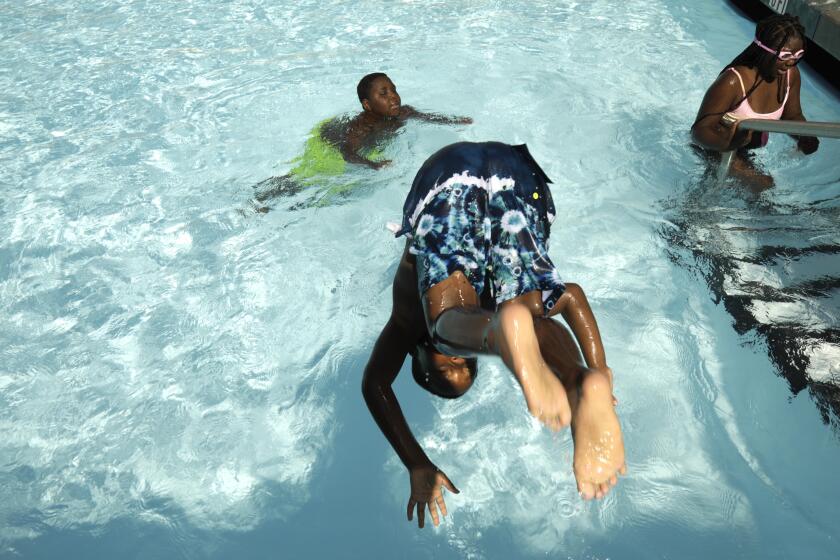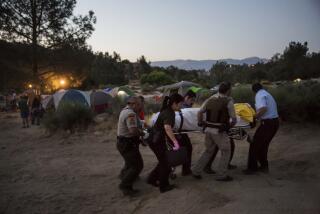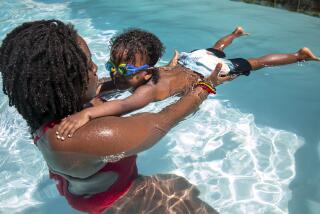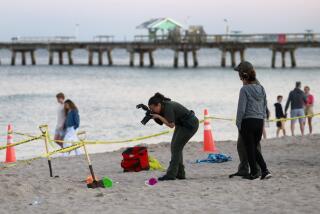It’s summer and pool season. Here’s how to keep your kids safe
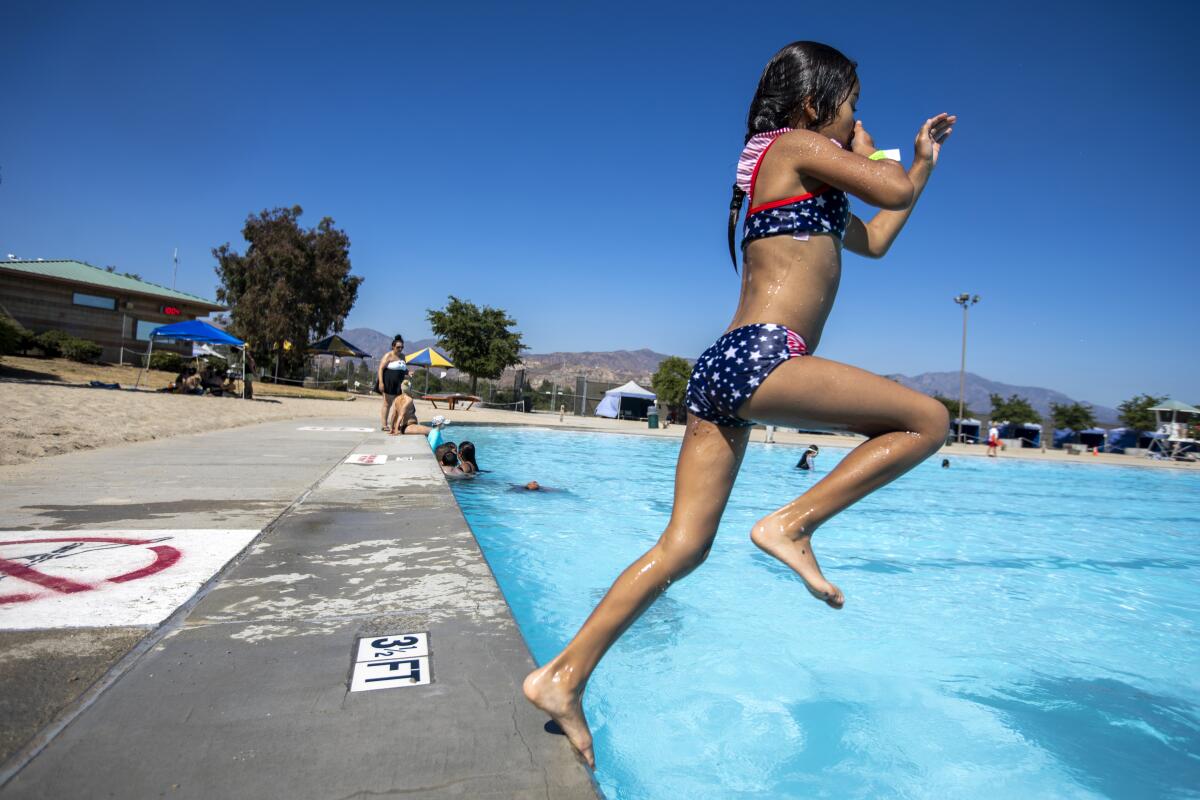
- Share via
With summer just ahead, federal safety officials are warning people about the risk of children drowning, and offering tips and precautions designed to prevent such tragedies.
Summertime drowning deaths and nonfatal injuries are most common between May and August, with the majority of such deaths happening in swimming pools, according to a report released last week by the U.S. Consumer Product Safety Commission.
Drownings nationally involving children younger than 5 in pools or spas increased 10% in 2020 with 279 fatalities, compared with 2019 when 254 fatalities were reported, according to the report. Among all child drownings, 75% involved children younger than 5.
More than half of the children under 5 who drowned were in pools or spas at their home. A majority of children under 15 who experience a drowning incident die the same day of the incident or within a week, according to the report.
Alexander Hoehn-Saric, chair of the U.S. Consumer Product Safety Commission, said that one of the biggest misconceptions people have about drownings is that it’s “like what you see in the movies” where it’s loud and a lot of splashing. But he said drowning can often be silent or happen when children are not supposed to be near pools or spas.
Certification rules don’t easily allow ‘Bay Watch’ lifeguards to become ‘Pool Watch’ lifeguards. State legislation could change that.
“Pools are fun, going to the beach is fun, and it should be,” Hoehn-Saric said. “What I see every day is death reports about children and drowning continues to be one of the highest reports that I see … the reason we do these reports is to remind folks and hopefully give a little jolt.”
He said it’s important for people to make sure their pool area is secure, including proper drain covers, door alarms, pool covers, and self-closing, self-latching devices on fence gates and doors that access pools. Hoehn-Saric noted that drain covers are particularly important to look for to prevent people — particularly children — from being pulled under.
Pool safety tips often include never leaving a child unattended in or near water and always designating an adult who won’t be distracted with reading, texting or using devices distracted.
In addition, government and public health officials note that children shouldn’t be left on their own with bathtubs, decorative ponds or fountains. Communities are also encouraged to learn how to swim and perform lifesaving CPR on children and adults.
“It could take the time that it takes to look at a text and read a text for a child to drown,” Hoehn-Saric said.
The report found that 64% of drownings could be attributed gaps in adult supervision, such as an adult losing contact or being unaware of where the child went when they accessed the pool or spa. Ten percent of the incidents reported found that children managed to go around pool or spa access barriers or the barrier in place was somehow compromised.
Part of the problem is drownings are not nationally understood, said Elaine Calip, senior director of development at the USA Swimming Foundation. She said the foundation would like to see policies change so that every young child knows basic water safety skills so they could get to the edge of the pool if they fell in or generally knew how to swim.
Kids can swim again, but are they ready for that?
Last year the foundation gave more than $900,000 for swim education. Each year the grants help about 20,000 kids learn to swim. The organizations receiving funding often try to offer free or reduced cost swim lessons to families in the area who wouldn’t normally be able to afford it.
Organizations use scholarships and other means to get families in the door and keep them on so that eventually the entire family — particularly ones with more than one child — can learn how to swim. She said the USA Swimming website includes a page to help people find lessons in their community.
The Los Angeles Department of Recreation and Parks also has a page where people can search for swim lessons across the city.
“The last thing we want is for an accident to happen and then families change their minds about learning how to swim, that is not what we want,” Calip said. “We would rather people feel uncomfortable at the beginning and even if they don’t know how to swim, at least encourage their children to learn how to swim.”
More to Read
Sign up for Essential California
The most important California stories and recommendations in your inbox every morning.
You may occasionally receive promotional content from the Los Angeles Times.

